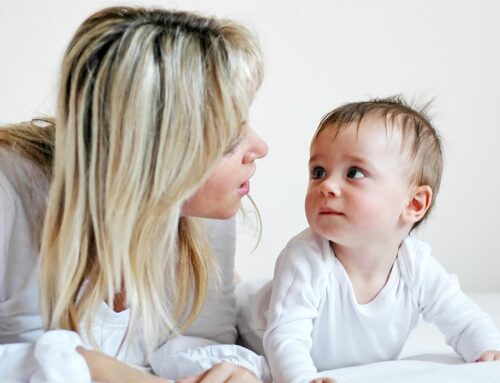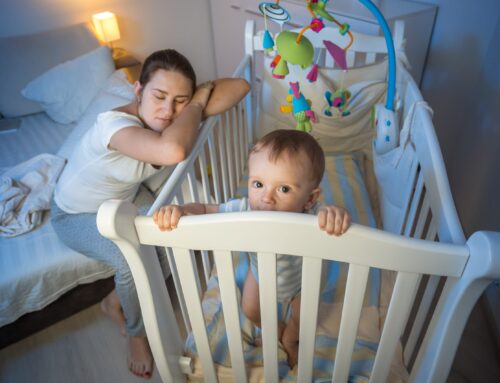Safe Sleeping
Sleep Safe, Dream Sound: Essential Guidelines for Parents
As parents, ensuring our children get enough restful sleep is crucial for their growth, development, and overall well-being. However, creating a safe sleep environment for children can be a daunting task, especially for first-time parents. From infants to teenagers, each age range has unique needs and considerations. In this blog post, we will provide you with essential safe sleep guidelines for children of all age ranges. Let’s dive in and learn how to ensure your child’s sleep is both peaceful and safe.
Safe Sleep Guidelines for Infants (0-12 months):
Infants require the most attention when it comes to sleep safety due to their vulnerability. Follow these guidelines to create a safe sleep environment for your little one:
Back to sleep: Always place your baby on their back for sleep. This position reduces the risk of Sudden Infant Death Syndrome (SIDS).
Firm sleep surface: Use a firm mattress with a fitted sheet for your baby’s crib. Avoid fluffy bedding, pillows, blankets, or stuffed toys in the crib, as they can pose suffocation hazards.
Room-sharing: Share a room with your baby, but avoid bed-sharing. Having your baby sleep in a crib or bassinet near your bed reduces the risk of SIDS. However, this option is based on personal choice or preference, many parents prefer baby sleeps in a different room and that is also all right.
Temperature control: Keep the room at a comfortable temperature, around 68-72°F (20-22°C). Dress your baby in light sleepwear to avoid overheating.
Safe Sleep Guidelines for Toddlers and Preschoolers (1-5 years):
As your child grows, their sleep patterns change and their sleeping environment needs adjustment. Consider these guidelines for safe sleep:
Consistent routine: Establish a consistent bedtime routine to promote healthy sleep habits. This routine may include activities like reading, brushing teeth, and calming activities.
Safe bedding: Use a firm mattress and fitted sheet in your child’s crib or bed. Avoid pillows, heavy blankets, and soft toys. Instead, dress your child in comfortable sleepwear appropriate for the room temperature.
Secure furniture: Anchor heavy furniture, such as dressers and bookcases, to the wall to prevent them from tipping over. As your child becomes more active, they may try to climb or explore their surroundings.
Nightlights: If your child is afraid of the dark, consider using a dim nightlight to provide a comforting glow. Choose a nightlight that is cool to the touch and ensure it doesn’t interfere with their sleep.
Safe Sleep Guidelines for School-Aged Children (6-12 years):
Children in this age range may become more independent in their sleep routines. Here are some guidelines to promote their safety during sleep:
Consistent sleep schedule: Encourage a consistent sleep schedule, ensuring your child gets enough sleep for their age (9-12 hours for most school-aged children). Consistency supports their overall well-being.
Comfortable bedding: Provide your child with a comfortable mattress and appropriate bedding. Encourage them to use a fitted sheet and avoid excessive pillows or blankets.
Technology-free bedrooms: Create a technology-free zone in your child’s bedroom by removing screens (TV, tablets, smartphones) before bedtime. The blue light emitted by screens can disrupt sleep patterns.
Bedroom safety: Ensure the bedroom is free from hazards, such as cords, sharp objects, or heavy items that could fall. Promote a clutter-free and peaceful sleeping environment.
Safe Sleep Guidelines for Teenagers (13+ years):
Teenagers often face sleep challenges due to biological changes and lifestyle factors. Help them establish healthy sleep habits with these guidelines:
Consistent sleep routine: Encourage your teenager to maintain a consistent sleep schedule, even on weekends. Adequate sleep is essential for their physical and mental well-being.
Limit screen time before bed: Encourage your teenager to avoid screens, such as smartphones, tablets, and laptops, at least an hour before bedtime. The blue light emitted by these devices can interfere with their sleep patterns.
Create a sleep-friendly environment: Ensure the bedroom is quiet, dark, and comfortable. Consider using blackout curtains, earplugs, or a white noise machine to promote a restful sleep environment.
Encourage healthy habits: Teach your teenager the importance of regular exercise, a balanced diet, and managing stress. These factors can significantly impact their sleep quality.
Avoid stimulants: Advise your teenager to limit their intake of caffeine and sugary drinks, especially in the evening. These substances can interfere with falling asleep and disrupt sleep patterns.
General Safe Sleep Tips for Children of All Ages:
Supervision: Always supervise your child during sleep, especially when they are younger. Regularly check on them to ensure their safety.
Smoking and secondhand smoke: Never smoke or allow smoking around your child, as exposure to secondhand smoke increases the risk of SIDS.
Breastfeeding: If possible, consider breastfeeding your baby. Breastfeeding has been linked to a lower risk of SIDS.
Avoid overheating: Dress your child appropriately for room temperature and avoid excessive layering or heavy blankets that may lead to overheating.
Educate caregivers: If your child is cared for by someone else, ensure they are aware of the safe sleep guidelines and follow them consistently.
Conclusion:
Creating a safe sleep environment for your child is essential for their health and well-being. By following these evidence-based guidelines, you can promote a restful and secure sleep routine from infancy to teenage years. Remember to prioritize back sleeping for infants, maintain a consistent sleep schedule, provide a comfortable sleep environment, and avoid sleep-disrupting factors like screens and stimulants. By implementing these safe sleep practices, you are giving your child the best chance for a good night’s sleep, setting them up for a bright and healthy future. Sleep safe, dream sound!




